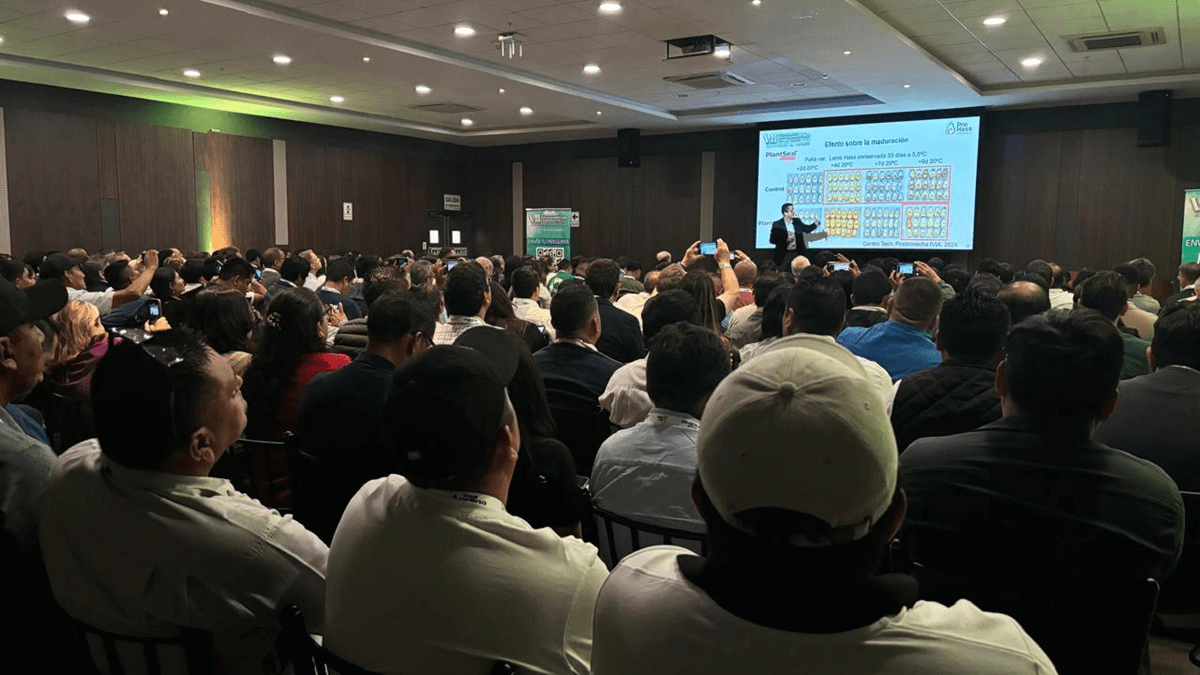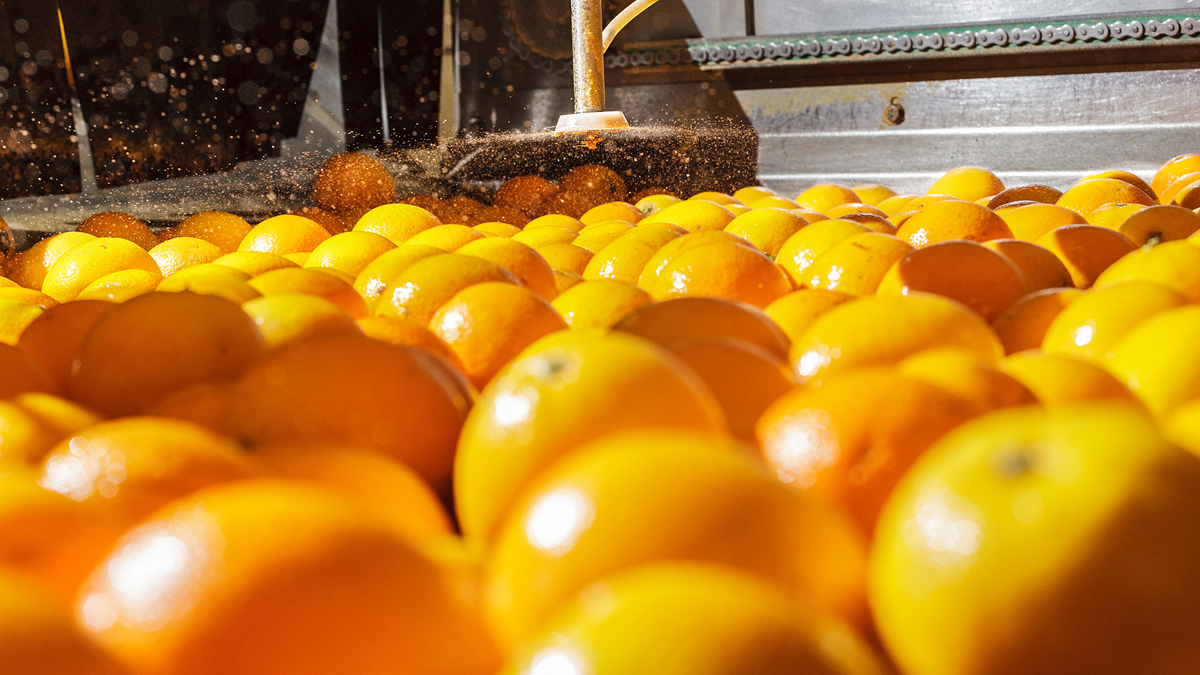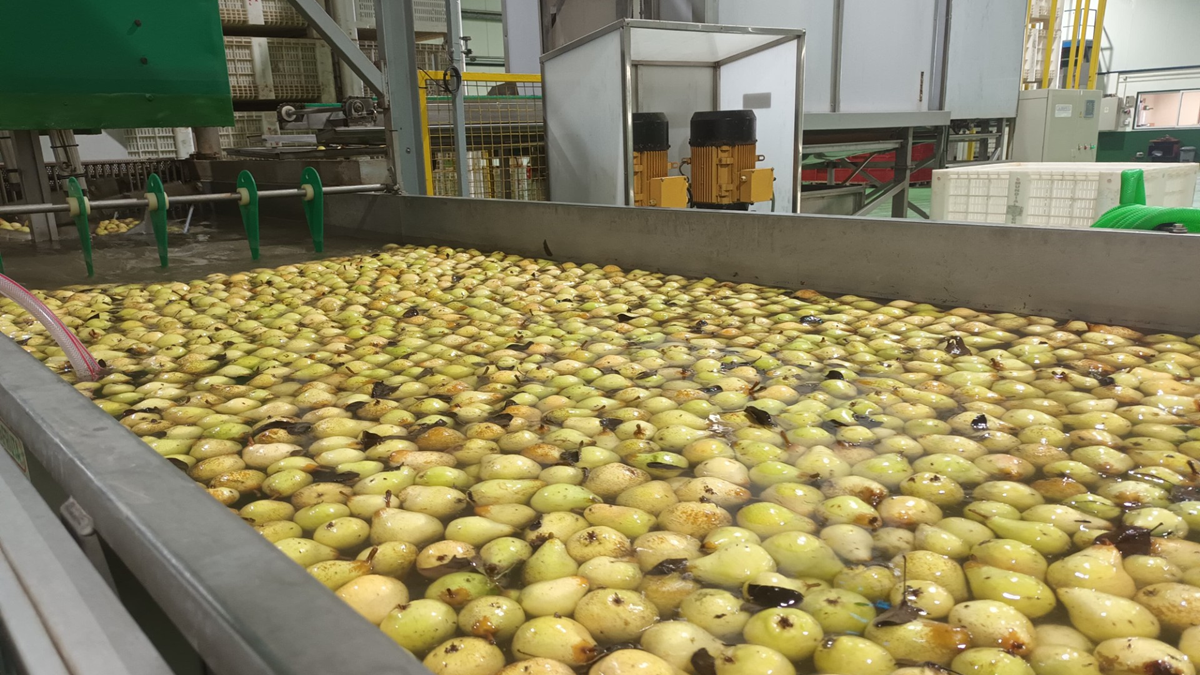Phytosanitaries
Cleaning and Disinfection at the Beginning of the Harvest Season
The beginning of the campaign is the ideal time to plan and carry out thorough Cleaning and Disinfection (C+D) protocols in all areas of the warehouse. With machinery stopped, storage rooms empty of fruit, and field crates vacant, it will be much easier to perform a comprehensive C+D of these points than when the warehouse is in full operation. It is crucial to minimize the fungal inoculum present in all areas of the warehouse with effective C+D protocols since there is a direct relationship between the number of spores and the infection percentage. Another reason why performing proper C+D is so important is to eliminate any reservoirs of spores resistant to fungicides. These spores will not be eliminated through fungicide application, so if they are not controlled, they can become dominant in the warehouse. When resistance occurs, the efficacy of fungicides in controlling rot diminishes, and control over the fungus's sporulation is lost. Without sporulation control, more spores disperse and accumulate in the environment, increasing the infection percentage?a cycle that is challenging to break. Every C+D protocol should consist of two stages: Cleaning: To ensure the effectiveness of disinfectants, it is essential to remove coarse debris, dirt, and organic matter. Disinfection: In this stage, disinfectants/biocides will be applied following the label instructions. After both stages, rinsing with clean water is necessary. Warehouse and Packing Lines Line cleaning should occur continuously throughout the campaign, but before starting the packing process, more targeted and thorough C+D protocols can be applied. Cleaning should be done using a degreasing detergent, and cleaning of hard-to-reach areas should not be overlooked. Disinfection is always done in the absence of fruit, using Quacide PQ60 EC, a broad-spectrum biocidal disinfectant containing tertiary amines and polymeric biguanides, applied using the X3 Nebulizer or the Despray-Da equipment along with Oxa-Biocid Eco, a glutaraldehyde-based disinfectant. It is also crucial to remove fungicides from the packing line to prevent cross-contamination of the fruit. For this purpose, we recommend using the FNG Cleaner acid detergent. Storage/Degreening Chambers Cleaning the chambers before storing fruit is crucial because it allows access to all areas, including floors, walls, corners, and ceilings. Cleaning should begin with an alkaline detergent like Citrolen Fuerte, followed by rinsing with a solution of water and Greencare-PH, a hydrogen peroxide-based disinfectant product. Next, you can use the recommended products for disinfecting the line: Quacide PQ60 EC and Oxa-Biocid ECO. To conclude the disinfection, we recommend using the Fumispore® fumigant disinfectant, even in the absence of fruit. It is a formulation of glycolic acid with fungicidal and bactericidal properties.
12 October, 2023
The beginning of the campaign is the ideal time to plan and carry out thorough Cleaning and Disinfection (C+D) protocols in all areas of the warehouse. With machinery stopped, storage rooms empty of fruit, and field crates vacant, it will be much easier to perform a comprehensive C+D of these points than when the warehouse is in full operation. It is crucial to minimize the fungal inoculum present in all areas of the warehouse with effective C+D protocols since there is a direct relationship between the number of spores and the infection percentage. Another reason why performing proper C+D is so important is to eliminate any reservoirs of spores resistant to fungicides. These spores will not be eliminated through fungicide application, so if they are not controlled, they can become dominant in the warehouse. When resistance occurs, the efficacy of fungicides in controlling rot diminishes, and control over the fungus's sporulation is lost. Without sporulation control, more spores disperse and accumulate in the environment, increasing the infection percentagea cycle that is challenging to break. Every C+D protocol should consist of two stages: Cleaning: To ensure the effectiveness of disinfectants, it is essential to remove coarse debris, dirt, and organic matter. Disinfection: In this stage, disinfectants/biocides will be applied following the label instructions. After both stages, rinsing with clean water is necessary. Warehouse and Packing LinesLine cleaning should occur continuously throughout the campaign, but before starting the packing process, more targeted and thorough C+D protocols can be applied. Cleaning should be done using a degreasing detergent, and cleaning of hard-to-reach areas should not be overlooked. Disinfection is always done in the absence of fruit, using Quacide PQ60 EC by CITROSOL, a broad-spectrum biocidal disinfectant containing tertiary amines and polymeric biguanides, applied using the X3 Nebulizer or the Despray-Da equipment along with Oxa-Biocid Eco, a glutaraldehyde-based disinfectant. It is also crucial to remove fungicides from the packing line to prevent cross-contamination of the fruit. For this purpose, we recommend using the FNG Cleaner acid detergent. Storage/Degreening ChambersCleaning the chambers before storing fruit is crucial because it allows access to all areas, including floors, walls, corners, and ceilings. Cleaning should begin with an alkaline detergent like Citrolen Fuerte, followed by rinsing with a solution of water and Greencare-PH, a hydrogen peroxide-based disinfectant product. Next, you can use the recommended products for disinfecting the line: Quacide PQ60 EC and Oxa-Biocid ECO. To conclude the disinfection, we recommend using the Fumispore® fumigant disinfectant, even in the absence of fruit. It is a formulation of glycolic acid with fungicidal and bactericidal properties. Figures1. Despray-Da Equipment for Line and Chamber Disinfection (left). Detail of Accumulated Dirt in Field Crates (right). 2. Surface Contamination Before and After Applying Fumispore® and the Efficacy of Disinfection on Citrus Preservation Chamber Walls.












